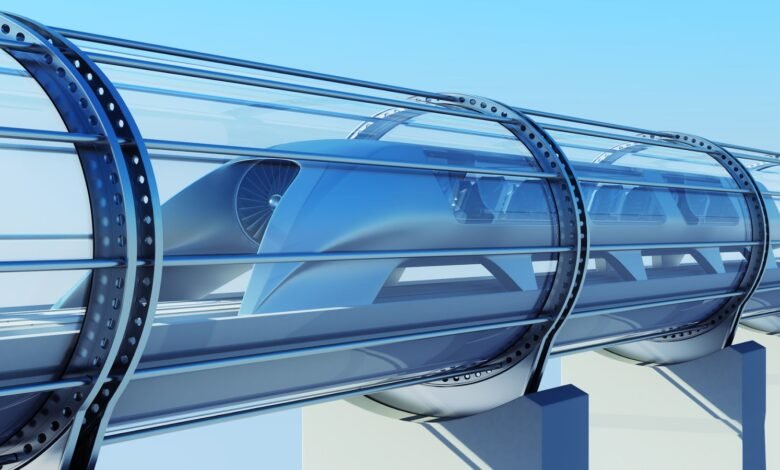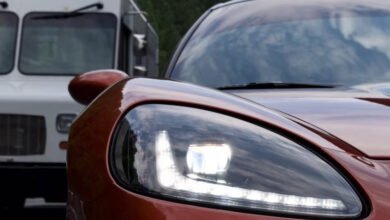
Transportation, a fundamental aspect of modern society, is on the brink of a transformative revolution. As traditional modes of transportation face challenges related to congestion, environmental impact, and efficiency, innovative solutions are emerging to shape the future of how we move from place to place. Among these, the Hyperloop stands out as a promising technology, offering a glimpse into a high-speed, sustainable, and efficient transportation future. In this article, we’ll explore the concept of the Hyperloop and other groundbreaking developments shaping the future of transportation.
I. Introduction
A. The Need for Transformation
With urbanization and population growth, the demand for efficient, fast, and sustainable transportation solutions has never been greater. Traditional modes, such as cars and airplanes, are reaching their limits in addressing the challenges of modern mobility.
B. The Rise of Innovative Transportation Technologies
In response to these challenges, visionary thinkers and engineers are exploring cutting-edge technologies to redefine transportation. The Hyperloop, a concept introduced by Elon Musk in 2013, has gained significant attention for its potential to revolutionize long-distance travel.
II. The Hyperloop Concept
A. Hyperloop Basics
The Hyperloop is a high-speed transportation system designed to move passenger or cargo pods through low-pressure tubes. Using magnetic levitation and linear induction motors, the pods travel at incredible speeds, potentially reaching over 700 miles per hour.
B. Low Friction and High Efficiency
The low-pressure environment inside the tubes minimizes air resistance, allowing the pods to move with minimal friction. This results in high energy efficiency and reduced travel times compared to traditional modes of transportation.
C. Safety and Sustainability
The Hyperloop’s closed system reduces the risk of accidents, and its electric propulsion system aims to be more sustainable than combustion-based transportation. With minimal environmental impact, the Hyperloop aligns with the growing emphasis on eco-friendly transportation solutions.
III. Advancements in Electric Vehicles (EVs)
A. Electric Cars
The rise of electric cars is a significant trend in the transportation sector. With advancements in battery technology, electric vehicles (EVs) offer a cleaner and more sustainable alternative to traditional internal combustion engine vehicles.
B. Autonomous Vehicles
Autonomous or self-driving vehicles represent another facet of the future of transportation. Integrating artificial intelligence and advanced sensors, autonomous vehicles aim to improve safety, reduce traffic congestion, and enhance the overall efficiency of transportation systems.
IV. High-Speed Rail Networks
A. Maglev Technology
Magnetic levitation (maglev) technology is transforming high-speed rail networks. Maglev trains, hovering above the tracks, can achieve remarkable speeds, reducing travel times between cities and providing a more sustainable alternative to air travel.
B. Integration with Hyperloop Concepts
Some visionary transportation plans envision the integration of high-speed rail networks with Hyperloop technology. This hybrid approach could create a seamless and efficient transportation system that combines the best aspects of both technologies.
V. Urban Air Mobility (UAM)
A. Flying Taxis and Drones
Urban Air Mobility (UAM) explores the concept of flying taxis and drones to navigate urban landscapes. Electric vertical takeoff and landing (eVTOL) aircraft aim to alleviate traffic congestion in densely populated areas and provide faster point-to-point transportation.
B. Infrastructure Challenges
While the potential benefits of UAM are promising, addressing infrastructure challenges, regulatory frameworks, and public acceptance remains crucial for the successful integration of flying taxis into urban transportation systems.
VI. Challenges and Considerations
A. Infrastructure Investment
Implementing transformative transportation technologies requires substantial infrastructure investment. Developing the necessary networks, stations, and support systems for technologies like the Hyperloop demands collaboration between public and private sectors.
B. Regulatory Frameworks
Establishing clear regulatory frameworks is essential for the safe and efficient deployment of innovative transportation technologies. Governments and regulatory bodies play a pivotal role in ensuring the standards, safety protocols, and operational guidelines are in place.
VII. Conclusion
The future of transportation holds exciting possibilities, driven by innovations like the Hyperloop, advancements in electric vehicles, high-speed rail networks, and the prospect of urban air mobility. As these technologies evolve and become more integrated into our daily lives, they have the potential to reshape how we connect with the world. While challenges exist, the collective efforts of visionary thinkers, engineers, and policymakers signal a promising era of sustainable, efficient, and high-speed transportation.
FAQs
- What is the Hyperloop, and how does it work? The Hyperloop is a high-speed transportation system that moves passenger or cargo pods through low-pressure tubes. Using magnetic levitation and linear induction motors, the pods travel at high speeds with minimal friction, offering a more energy-efficient and faster alternative to traditional transportation.
- How do electric vehicles contribute to the future of transportation? Electric vehicles (EVs) contribute to the future of transportation by offering a cleaner and more sustainable alternative to traditional internal combustion engine vehicles. With advancements in battery technology, EVs aim to reduce carbon emissions and dependence on fossil fuels.
- What is Urban Air Mobility (UAM)? Urban Air Mobility (UAM) explores the concept of flying taxis and drones for transportation within urban areas. Electric vertical takeoff and landing (eVTOL) aircraft aim to provide faster point-to-point transportation and alleviate traffic congestion in densely populated urban environments.
- What are the challenges of implementing transformative transportation technologies? Implementing transformative transportation technologies faces challenges such as infrastructure investment, regulatory frameworks, and public acceptance. Developing the necessary networks, stations, and support systems requires collaboration between public and private sectors, and clear regulations are essential for safe and efficient deployment.



